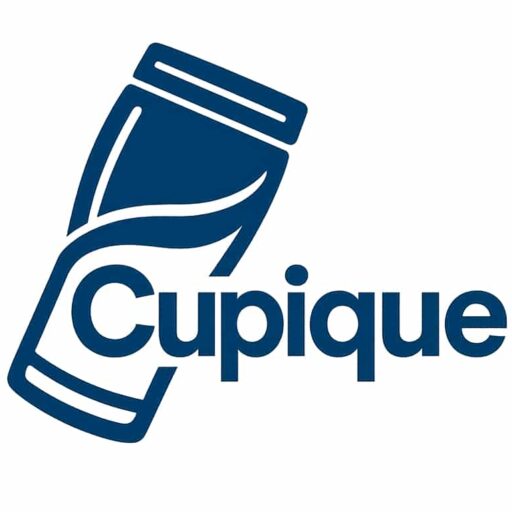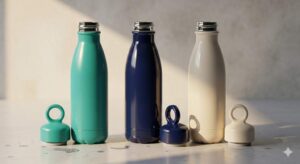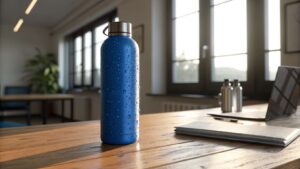
Stainless steel water bottles are generally safe for most people. True stainless steel allergies are extremely rare, with nickel sensitivity being the actual concern affecting 10-20% of the population. Quality bottles with proper manufacturing have minimal leaching under normal use conditions.
I've been in the stainless steel bottle manufacturing business for over a decade, and safety questions are among the most common concerns from our partners. Let's explore what the science actually says about stainless steel safety, allergies, and what you need to know before making purchasing decisions.
Stainless steel water bottles are safe for most peopleTrue
The paragraph states that true stainless steel allergies are very rare.
Stainless steel water bottles commonly cause allergic reactionsFalse
The paragraph indicates that concerns about allergic reactions are more related to nickel sensitivity, not true stainless steel allergies.
How Do You Know If You Are Allergic to Stainless Steel
Do you notice skin redness, itching, or rashes after contact with stainless steel products? Many people mistakenly believe they're allergic to stainless steel itself, when the real culprit might be something specific within the material.
A true stainless steel allergy is extremely rare. What most people experience is actually a nickel sensitivity, which affects 10-20% of the population. Signs include redness, itching, dry patches, or rashes where skin contacts the metal, typically appearing 12-48 hours after exposure.
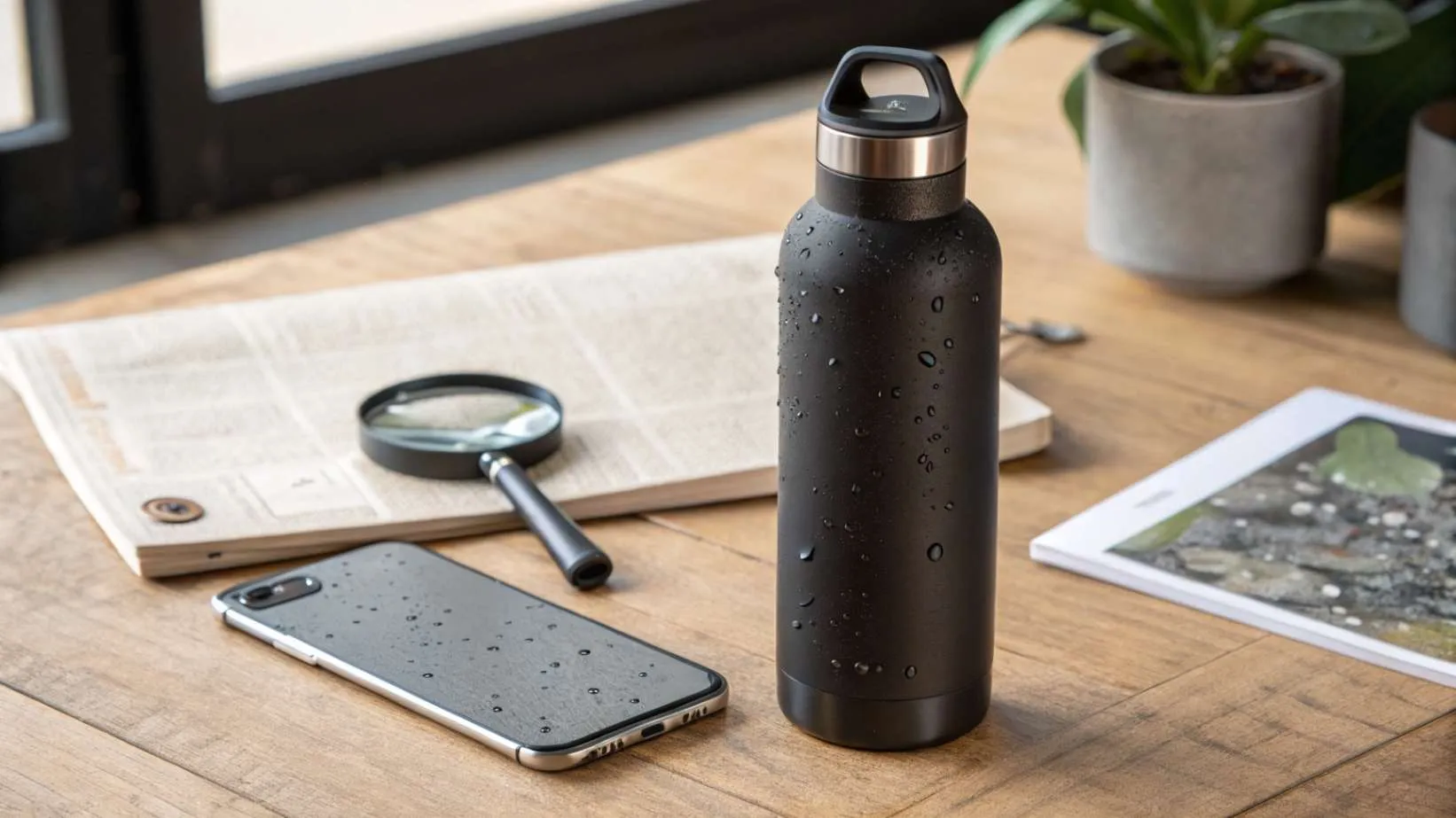
Understanding Nickel Sensitivity vs. Stainless Steel Allergy
When customers report "stainless steel allergies," they're almost always referring to nickel sensitivity. This distinction is important for several reasons:
- Composition Matters: Stainless steel isn't a single material but an alloy containing various metals. The most common grades used in water bottles are:
| Steel Grade | Nickel Content | Common Usage |
|---|---|---|
| 304 (18/8) | 8-10.5% | Standard water bottles |
| 316 (18/10) | 10-14% | Premium bottles, better for acidic drinks |
- Diagnosis Methods
The only reliable way to confirm a nickel sensitivity is through patch testing performed by a dermatologist. This involves placing small amounts of potential allergens on the skin under patches and monitoring for reactions over 48-96 hours.
- Severity Spectrum
Nickel sensitivity exists on a spectrum, with reactions ranging from mild to severe:
| Severity | Symptoms | Typical Reaction Time |
|---|---|---|
| Mild | Slight redness, minor itching | 24-48 hours |
| Moderate | Noticeable rash, discomfort | 12-24 hours |
| Severe | Blistering, intense itching, spreading beyond contact area | Within 12 hours |
In my experience working with thousands of customers, true severe reactions to properly manufactured stainless steel bottles are exceedingly rare. Most concerns stem from misconceptions rather than actual allergic responses.
Nickel sensitivity is more common than stainless steel allergyTrue
The passage states that a true stainless steel allergy is extremely rare, while nickel sensitivity affects 10-20% of the population.
Stainless steel itself is the main cause of skin reactionsFalse
The passage states that the real culprit is often something specific within the stainless steel material, not the stainless steel itself.
What Are the Side Effects of Stainless Steel Bottles
Have you ever taken a sip from your stainless steel bottle and noticed an unpleasant metallic taste? Or wondered if that strange smell is normal? These experiences make many question if there are hidden dangers lurking in their eco-friendly hydration choice.
The main reported side effects of stainless steel bottles include potential metallic taste (especially with new bottles or acidic drinks), difficulty cleaning complex lids leading to bacterial growth, and rare allergic reactions in nickel-sensitive individuals. These issues are largely preventable with proper manufacturing and maintenance.
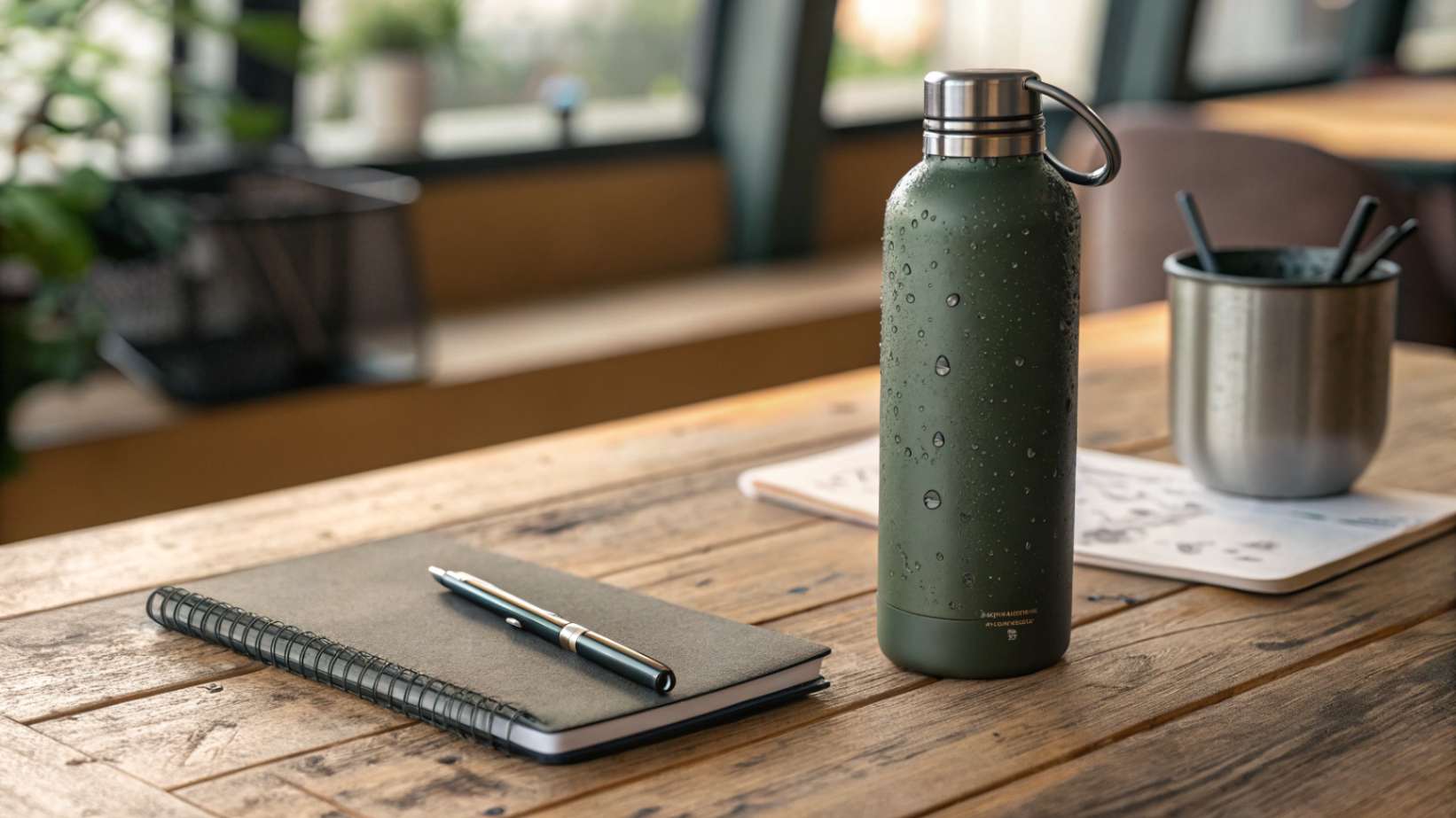
Beyond Allergies: Common Concerns Explained
When discussing side effects, it's important to distinguish between actual safety issues and minor inconveniences. Here's what our decade of manufacturing experience has taught us:
Metallic Taste: Causes and Solutions
The metallic taste some users report typically stems from:
- Manufacturing Residues: Insufficient final cleaning can leave polishing compounds or processing chemicals.
- Inadequate Passivation: This critical manufacturing step creates a protective chromium oxide layer.
- User Expectations: First-time users of stainless steel may be more sensitive to subtle differences compared to plastic or glass.
| Common Cause | Prevention Method | Consumer Solution |
|---|---|---|
| Manufacturing residues | Enhanced final cleaning protocols | Wash thoroughly before first use with mild soap |
| Poor passivation | Standardized passivation process | Purchase from reputable manufacturers with quality certifications |
| Acidic beverages | Material selection (316 for acidic drinks) | Avoid storing acidic beverages for extended periods |
Hygiene Concerns
Complex lid designs can harbor bacteria if not properly cleaned. This isn't a direct side effect of stainless steel itself but rather a design consideration. At Cupique, we prioritize designs that balance functionality with cleanability, and recommend regular thorough cleaning of all components.
Temperature Management Expectations
While not a side effect per se, some users are disappointed when their expectations for temperature retention aren't met. This typically relates to manufacturing quality rather than the material itself:
| Quality Factor | Impact on Performance | How to Identify Quality |
|---|---|---|
| Wall thickness | Thinner walls provide less insulation | Weight comparison, specifications review |
| Vacuum seal integrity | Poor seals reduce temperature retention | Condensation between walls, rapid temperature loss |
| Lid design | Inadequate sealing allows heat transfer | Look for silicone seals, threaded closures |
Stainless steel bottles can cause metallic taste and bacterial growth.True
The main reported side effects include metallic taste and bacterial growth, which can be prevented with proper maintenance.
Stainless steel bottles are dangerous and should not be used.False
The side effects are largely preventable with proper manufacturing and maintenance, and stainless steel bottles are generally considered safe.
Do Stainless Steel Water Bottles Leach Nickel
Does your stainless steel bottle secretly contaminate your water with harmful metals? This question keeps many consumers awake at night, especially those with known sensitivities or parents concerned about their children's health.
Yes, stainless steel water bottles can leach trace amounts of nickel and chromium, but typically at levels far below safety thresholds under normal use conditions. Leaching increases with acidic beverages, high temperatures, and prolonged storage. Quality manufacturing with proper passivation significantly minimizes this risk.

The Science of Metal Migration
The potential for metal ions to transfer from bottle to beverage depends on multiple factors. Understanding these can help both manufacturers and consumers make informed decisions:
Critical Factors Affecting Leaching
- Material Quality
Not all stainless steel is created equal. The source of raw materials and manufacturing processes significantly impact leaching potential:
| Quality Indicator | What to Look For | Why It Matters |
|---|---|---|
| Material Test Certificates | Documentation from reputable steel mills | Verifies exact composition and purity |
| Manufacturing Standards | ISO certifications, quality control processes | Ensures consistent production quality |
| Regulatory Compliance | FDA, LFGB, REACH certifications | Confirms testing for specific migration limits |
- Passivation Effectiveness
Passivation is perhaps the most critical manufacturing step for minimizing leaching. This chemical process creates a protective chromium oxide layer that acts as a barrier between the steel and contents:
| Passivation Quality | Indicators | Impact on Safety |
|---|---|---|
| Properly passivated | Consistent finish, no discoloration | Minimal leaching even with acidic contents |
| Inadequately passivated | Spotty appearance, susceptible to staining | Increased metal migration, especially with acidic beverages |
| Non-passivated | Often found in extremely low-cost products | Significant leaching possible, not recommended for food contact |
- Usage Conditions
Even with high-quality materials, certain usage patterns can increase leaching risk:
| Usage Factor | Leaching Risk | Recommendation |
|---|---|---|
| Highly acidic contents (pH < 4) | Increased | Limit storage time, consider 316 grade steel |
| Very hot liquids (>175°F/80°C) | Moderately increased | Avoid prolonged storage of near-boiling liquids |
| Extended storage (>24 hours) | Slightly increased | Empty and rinse bottle daily when possible |
Regulatory Standards and Testing
At Cupique, we adhere to strict testing protocols that exceed regulatory requirements. Key standards include:
These tests establish specific migration limits (SMLs) for various metals, including nickel and chromium, ensuring that any potential leaching remains well below levels of health concern.
Stainless steel bottles can leach nickel and chromiumTrue
The passage states that stainless steel bottles can leach trace amounts of nickel and chromium.
Stainless steel bottles always leach harmful levels of nickel and chromiumFalse
The passage states that leaching is typically at levels far below safety thresholds under normal use conditions.
Does Stainless Steel Irritate Sensitive Skin
Is your water bottle causing that mysterious rash? For people with sensitive skin, this question isn't just academic—it's a daily concern that affects their comfort and health choices.
Stainless steel can irritate sensitive skin, primarily due to its nickel content rather than the steel itself. The risk varies based on individual sensitivity levels, contact duration, and environmental factors like sweat and friction. Higher-quality steel with proper finishing typically causes fewer reactions.

Skin Sensitivity: Beyond Simple Allergies
The interaction between stainless steel and sensitive skin is complex and depends on multiple factors:
Types of Skin Reactions
Not all skin reactions to stainless steel are true allergies:
| Reaction Type | Characteristics | Common Triggers |
|---|---|---|
| Allergic Contact Dermatitis | Redness, itching, possibly blisters, delayed reaction | True nickel allergy, immune-mediated |
| Irritant Contact Dermatitis | Immediate irritation, burning sensation | Friction, sweat, cleaning residues |
| Pressure Urticaria | Hives or welts at pressure points | Physical pressure from tight grip or contact |
Factors That Increase Reaction Risk
Several conditions can make skin reactions more likely, even in people without diagnosed metal allergies:
- Skin Barrier Disruption
Existing skin conditions like eczema or psoriasis can compromise the skin barrier, making nickel penetration easier and reactions more likely.
- Environmental Factors
| Factor | How It Increases Risk | Mitigation Strategy |
|---|---|---|
| Sweat | Dissolves nickel ions, facilitating skin penetration | Wipe bottle exterior regularly, avoid grip during exercise |
| Heat | Expands metal, potentially releasing more ions | Use insulated bottles to minimize exterior heat |
| Friction | Damages skin barrier, increases ion transfer | Choose bottles with smooth finishes and rounded edges |
- Contact Duration
Brief contact is less likely to trigger reactions than prolonged exposure. This explains why some people react to jewelry worn all day but not to occasional contact with stainless steel items.
Material Selection Considerations
For those with known sensitivities, material choice becomes crucial:
| Material Option | Nickel Content | Suitability for Sensitive Skin |
|---|---|---|
| 304 Stainless Steel | 8-10.5% | Moderate risk for sensitive individuals |
| 316 Stainless Steel | 10-14% | Despite higher nickel, better stability may reduce reactions |
| Coated Stainless Steel | Varies (barrier present) | Good option if coating is intact |
| Alternative Materials (glass, certain plastics) | None | Best for extremely sensitive individuals |
At Cupique, we recognize that material sensitivity varies widely among end users. That's why we offer various options and finishes, allowing our B2B partners to select products appropriate for their specific customer base.
Stainless steel can irritate sensitive skin due to its nickel contentTrue
The snippet paragraph states that stainless steel can irritate sensitive skin primarily due to its nickel content.
All stainless steel products cause skin irritation for people with sensitive skinFalse
The snippet states that higher-quality steel with proper finishing typically causes fewer reactions, indicating not all stainless steel products will irritate sensitive skin.
Conclusion
Stainless steel water bottles are safe for most people when properly manufactured. While nickel sensitivity affects some users, quality materials, proper passivation, and good manufacturing practices minimize risks. Understanding these factors helps you make informed choices about the products you use daily.
